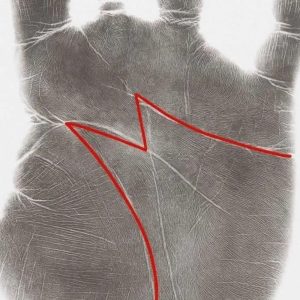Imagine driving along a highway where you notice something puzzling—multiple roads that seem to wind unnecessarily, running parallel or taking wide, curving detours. You wonder, “Why don’t they just build a straight shortcut through this area? It would be faster and more efficient.” At first glance, the idea of constructing a direct, straight road might seem like the obvious choice. However, there are several reasons why engineers and urban planners often opt for winding routes instead of the straight, rapid pathways we might expect.

Safety First: Reducing Speed for Safer Roads
The most significant reason why highways and roads aren’t always built in straight lines is to control the speed of vehicles. Highways that are too straight allow cars to accelerate to dangerously high speeds. By introducing curves and bends, planners can naturally slow down traffic, making the roads safer for everyone.
Straight roads can tempt drivers to exceed speed limits, leading to a higher risk of accidents, especially in areas where traffic may need to merge or where there are pedestrian crossings. Curved highways help moderate speed without the need for constant police enforcement or speed cameras. The psychology behind road design is clear: when drivers encounter bends, they instinctively slow down, reducing the potential for high-speed collisions.
Environmental Considerations: Working With Nature, Not Against It
Another key reason roads are not always built in straight lines is the need to work with the natural landscape rather than against it. Building straight roads often means cutting through hills, forests, rivers, or other natural features, which can have a significant environmental impact. In many cases, it’s more environmentally friendly and cost-effective to build a curved road that works around these obstacles rather than plowing through them.
For instance, constructing a straight highway through a mountainous region would require extensive tunneling or blasting through rock, which could lead to soil erosion, habitat destruction, and water drainage problems. Curved routes, on the other hand, can follow the natural contours of the land, minimizing environmental disruption while still providing a functional roadway.
Urban and Community Planning: Balancing Infrastructure with Daily Life
When designing roads in urban areas, planners need to think beyond efficiency and consider how the road will impact the community. A straight, fast-moving road cutting through a residential neighborhood could bring noise pollution, air pollution, and a higher risk of accidents close to homes, schools, and businesses.
Urban planners often create curved or slower routes to protect the character and safety of residential areas. These winding roads also help preserve the aesthetic appeal of a city, avoiding the harsh, disruptive nature of straight, high-speed highways. By curving roads through neighborhoods or commercial districts, planners can balance the need for infrastructure with the quality of life for residents.
Legal and Land Ownership Issues: Navigating Complexities
In addition to safety and environmental concerns, legal and land ownership issues can play a crucial role in road design. Building a straight road might require purchasing land from private owners or relocating existing infrastructure, which can be costly and time-consuming. The more complex the legal situation, the more likely it is that planners will choose a curved route that avoids these issues.
For example, a straight road might need to cut through multiple privately-owned properties, requiring negotiations, compensation, and potentially lengthy legal battles. A winding road, on the other hand, might avoid these properties entirely, speeding up construction and reducing costs.
Engineering Challenges: Building for Durability and Functionality
From an engineering perspective, curved roads can sometimes be more practical and durable than straight roads. Depending on the terrain, building a straight road might require significant earthworks, such as leveling hills or filling valleys, which can compromise the structural integrity of the road. Curved roads can follow the natural slope of the land, reducing the risk of erosion and other long-term maintenance issues.
Additionally, curved roads can improve drainage, as water naturally flows along the bends, reducing the risk of flooding. This is particularly important in areas prone to heavy rain or where drainage is a concern. Engineers must balance efficiency with longevity, ensuring that roads remain functional for decades to come.
Conclusion: More Than Just a Shortcut
While it might seem counterintuitive at first, there are many reasons why roads aren’t always built straight and quickly. From ensuring safety and protecting the environment to managing legal challenges and engineering constraints, road design is a complex process that requires careful consideration of numerous factors. Curved and winding roads may take a little longer to travel, but they are often safer, more sustainable, and more practical in the long run.
Next time you find yourself on a highway that seems to twist and turn unnecessarily, remember: those curves might be saving lives, protecting the environment, or preserving the unique character of a community. The next time you wonder, “Why don’t people build it straight and quickly?” you’ll know there’s more to road design than meets the eye.



